Felix Baumgartner floated 39km up into space — then jumped
Nature rules the world with a tyrannical authority that only the bravest is willing to contest. While Felix Baumgartner challenged nature and took significant risks, his epic space jump was not a gamble.
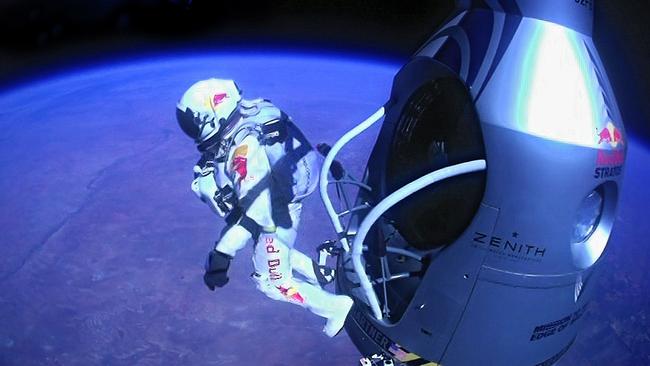
Ever since the ancient Greeks put it about that our planet was round, we can all say that we have stood on its edge.
Felix Baumgartner can go a step further: he is one of only two humans who have stood on the edge of space.
One Sunday morning in 2012, Baumgartner floated in a balloon high above the New Mexico desert in a tight fibreglass and steel alloy capsule. At 39km up, he emerged from the shiny pod and uttered a line he had rehearsed for this moment: “Sometimes you have to go up to understand how small you are. I’m coming home now.”
He stood on the narrow tread board for a few moments then gently pushed himself forward and fell to earth over the course of 9.09 minutes breaking a series of records – and the sound barrier – in the process.
Nature rules the world with a tyrannical authority that only the bravest of us is willing to contest. Baumgartner challenged nature, but only after he and his expert team spent five years on the project, funded by the Red Bull energy drink company which, like Baumgartner, is Austrian.
They may have spent as much $40m to put their man high into the stratosphere. And while there were a couple of significant risks, it was not a gamble. Multiple cameras on Baumgartner and the capsule would beam the event “live” online (but on a 20-second delay, just in case). If things turned nasty, it would be bad news, and just for the jumper.
Similarly, every other risk was managed. He was backed up by technology at every point. He may be a daredevil, but he removed as much dare as he possibly could and kept the devil on a short leash.
Former US air force pilot Jo Kittinger had set the record for the highest parachute jump in August, 1960 leaping in a pressurised suit from the gondola beneath a balloon at 31.3km, towing a small drogue chute for stability.
Kittinger – who would be shot down over Vietnam and held as a prisoner of war and then in 1984 would become the first man to cross the Atlantic in a gas balloon – fell for 4.36 minutes.
With no drogue, and chancing that he might enter a deadly spin in the almost airless atmosphere – “half of them said ‘You’re gonna spin like crazy and you’ll never be able to stop’, and the other half said ‘We don’t think you are going to spin at all’ ” – Baumgartner set off from 39km up, a record. He hit a top speed of 1357.64 km/h (Mach 1.25) – remaining supersonic for about 30 seconds – another record, passing easily through the sound barrier which he left noiselessly behind although his ground crew, which included Kittinger, heard a soft, distant boom.
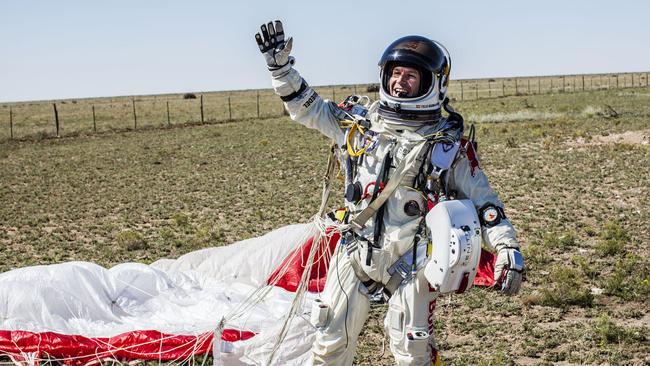
Baumgartner’s freefall was 17 seconds shorter than Kittinger’s because although he fell 36.4km before opening his chute, he passed through thinner air and was not slowed down by the drogue. But he spun out of control and there were no protocols for recovering from this.
“Nobody had ever spun at supersonic speed,” Baumgartner explained this week.
“There was nobody who could tell you what to do. You had to find that out on your own. Which was very difficult.”
At first he began to spin slowly. It stopped, but he then started to turn in the opposite direction. “And then it really ramped up into a very violent spin. That was a very critical moment – everybody on the ground was scared because they could see me on the monitor.”
During the spin he rotated 16 times in 13 seconds.
Had the spinning elevated the G-forces, he could have lost consciousness as Kittinger had on a near-fatal test run before his big jump. Extreme G-force can and has killed pilots as blood is drained from their head and they suffer cerebral hypoxia, a loss of oxygen to the brain. But Baumgartner stayed calm, knowing that he was falling as fast as a man could towards heavier air in which he could use the parachuting (2500 skydives) and BASE jumping skills he had perfected over many years.
“When you fall down to about 27km there’s a thicker layer of air, and that thicker layer you can use (to control your descent). Up there it was like sailing without the wind. You can be the best sailor in the world, but if there is no wind you can’t sail. I had to wait, I had to be really patient. (Later) I was able to regain control and after that I was stable as a rock.”
. “That was the first moment when I had time to enjoy my skydive. Before it was just work. Hard work.” And he had technological reinforcements. Had he lost consciousness there was a device that would have – at a certain altitude and a certain speed – fired his reserve chute, hopefully in time. The technology was called G Whiz: “G” for gravity, “whiz” for whizzer.
Keeping him alive when he departed the capsule was a pressure suit and air supply.
He was more than 30km higher than Mount Everest and the temperature was -71C. Almost every component of the Red Bull Stratos project was bespoke, other than the pressure suits, which were adapted from those worn by American pilots in U2 reconnaissance flights during which they cruise for many hours at 21,300m. (The U2 was to have been phased out starting in 2015 but the Cold War warrior is so flexible a refit could see it flying on until 2050.)
The lifesaving importance of the suits was proved 60 years back when a test pilot in an unpressurised F-104 fighter jet radioed in: “My glove came off. Goodbye.” His suit instantly depressurised, he lost consciousness and would soon have been brain dead.
So Baumgartner’s suit was well tested technology, but they modified the arm and hip rotation to give him greater mobility, not least of which so he could exit the capsule. His suit, helmet and the craft are now on display at The Smithsonian’s National Air and Space Museum in Washington.
Like Kittinger, Baumgartner did two trial jumps, one in March 2012 from 21.8km up, and a second three months later from 29.46km.
Taking him there each time were remarkable single-use helium-filled balloons made up of more than 16ha of polyethylene of only 0.2mm thickness and standing about 170m high at takeoff.
Baumgartner was used to using new technology to fly to new heights. He jumped from the Petronas Towers – then the world’s tallest buildings – in 1999, then the highest BASE (buildings, antenna, spans and earth) leap. Two years later he achieved the shortest BASE jump – about 29m – letting go of the outstretched hand of Rio de Janeiro’s iconic Christ the Redeemer statue.
Then, in 2003, he used a carbon-fibre wing to cross from England to France. He had tested it over a lake months before.
He thought “we could fly across the English Channel”. “We covered the measurements, tested the flight. Found a plane to take me all the way up to 10,000m.” On July 20, 2003, at 6am over Dover, he leapt from the plane with the carbon fibre wings strapped on like a backpack. “I was gliding all across the channel to Calais in just 5 minutes and 22 seconds.” The ferry takes 90 minutes.
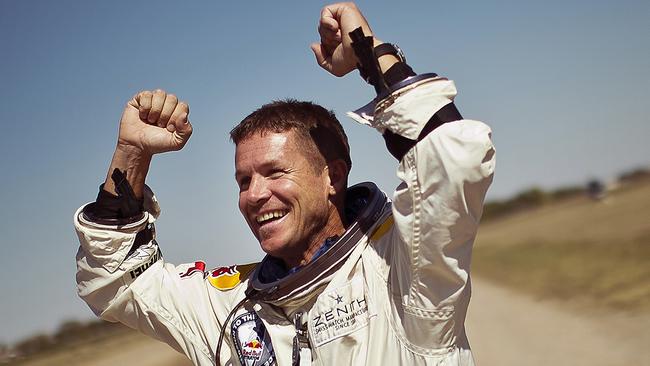
But most of the flight was above and in clouds. He had no idea how far he had travelled, or indeed, if he was clearing the legendary sea “border”. There was a rescue boat, just in case. He emerged from the clouds a little nervous – “But I was over French territory.”
After the jump from the stratosphere he folded up his canopy and left all that extreme stuff to others. His world record jump was soon bettered; computer scientist and Google senior vice-president Alan Eustace was cut loose from a balloon at 41.4km, but he also used a drogue.
His retirement pleases Baumgartner’s mother. “A regular skydive she doesn’t mind. She was never happy with the extreme stuff.”
I asked him if he had made any arrangements in case it failed, you know, a will perhaps. “No, I started to believe it was bad karma. If you have a testament before you go to the stratosphere it kind of feels weird. I was never under the impression that I might die.”
He says that if he thought it might be lethal he would not have signed on for the task.
“The reason we tested so much was to find the solutions to the what-ifs. I was very confident it would work.” How confident? “I was 92 per cent that it works and 8 per cent that it doesn’t.”
When it had worked and he had parachuted that last couple of kilometres to the almost featureless Chihuahuan Desert, he landed on his feet and fell to his knees, raising his arms in victory. He appeared to be alone on the planet having arrived from who knows where.
He looked like Adam.


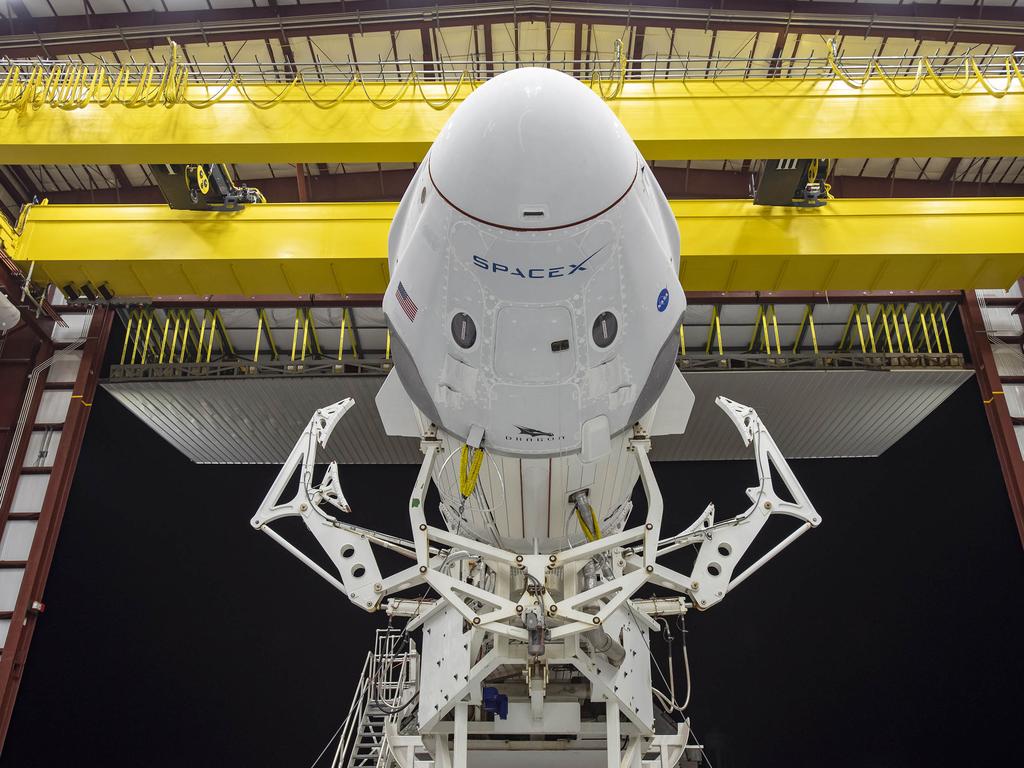

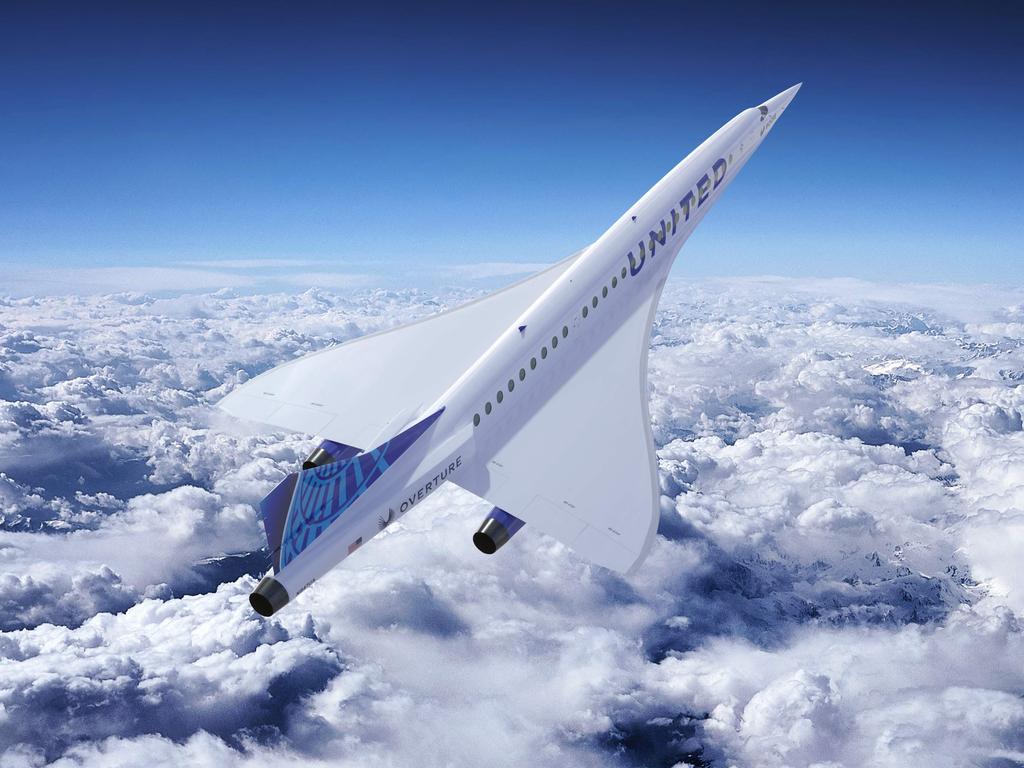
To join the conversation, please log in. Don't have an account? Register
Join the conversation, you are commenting as Logout